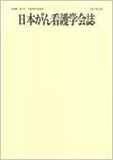Japanese
English
- 販売していません
- Abstract 文献概要
- 参考文献 Reference
要旨
がん患者の呼吸困難感は発生頻度が高く,がん性疼痛に比べて標準的治療が確立されていない緩和困難な症状である.呼吸困難の感じ方は個人差があるため,その評価は主観的な指標が中心となっている.本研究は,フットリフレクソロジーによるがん患者の呼吸困難感の変化を主観的・生理学的観点から明らかにし,呼吸困難感の評価指標としての自律神経活動の有用性について検討した.
呼吸困難感のある進行期がん患者8名に対して,(介入群)と安静臥床(非介入群)を同一対象に実施した.施術は3日間,1回に20分間実施し,施術前後は10分間安静臥床とした.介入・非介入ともに実験の全行程において,心拍計によるモニタリングを行い,交感神経と副交感神経を分離評価できる心拍変動解析を行った.測定項目は,主観的評価(呼吸困難感,リラックス感,眠気),自律神経活動(心拍数,HF・LF/HF)とした.その結果,2群間の有意差はみられなかったが,介入群は呼吸困難感が有意に低下した(p=0.034).触圧刺激による心地よさは自律神経系に影響を与えるとされ,リラックス感や眠気の有意な増加に対応して,自律神経活動は,心拍数の有意な低下(p=0.008)および施術終了後,副交感神経活動の参考指標であるHFの有意な上昇を示した(p=0.045).また呼吸困難感と自律神経活動の相関係数は,0.25−0.80を示した.以上より,自律神経活動は,がん患者の呼吸困難感の評価指標となりうる可能性が示唆された.
In contrast to cancer pain, no standard treatment has been established for dyspnea, which is a high frequency symptom in cancer patients. Because there are differences between individuals in the sensation of dyspnea, subjective indicators are mainly used for evaluation. This study examined the usefulness of autonomic nerve activity as an evaluative indicator of dyspnea. This was accomplished by investigating changes from a subjective and physiological standpoint in cancer patients with dyspnea treated with reflexology.
This study included eight advanced cancer patients with dyspnea, who were divided into foot reflexology (intervention) and bed-rest (non-intervention) groups. Treatment was administered for three days and applied for 20 minutes each session, with 10 minutes of bed rest before and after treatment. Both the intervention and nonintervention groups were monitored using an experimental total-excursion heart rate meter, and heart rate valiability analysis was conducted, which enabled separate evaluations of sympathetic and parasympathetic nerve activity. The measured items were in the areas of subjective evaluation (dyspnea, sense of relaxation, and drowsiness) and autonomic nerve activity (heart rate and HF・LF/HF). We found that although no significant differences were observed between the two groups, dyspnea in the intervention group decreased significantly (p = 0.034) because of the treatment. Corresponding to a significant increase in relaxation and drowsiness (commensurate with the effect of comfort on the autonomic nervous system exerted by pressure stimulus), a significant decrease in the heart rate (p = 0.008), which is the reference indicator for autonomic nerve activity, and a significant post-treatment increase (p = 0.045) in the HF (the reference indicator for parasympathetic nerve activity), were observed. The correlation coefficient of dyspnea and autonomic nerve activity showed 0.25-0.80. These results suggest that autonomic nerve activity can be an evaluative indicator for dyspnea in cancer patients.
Copyright © 2018, Japanese Society of Cancer Nursing All rights reserved.


